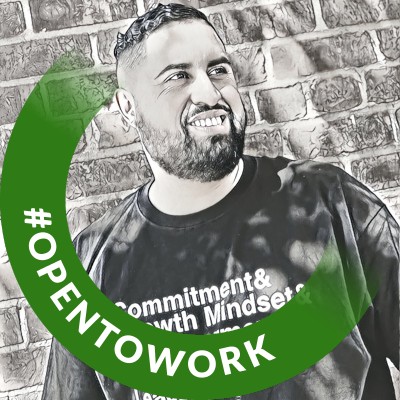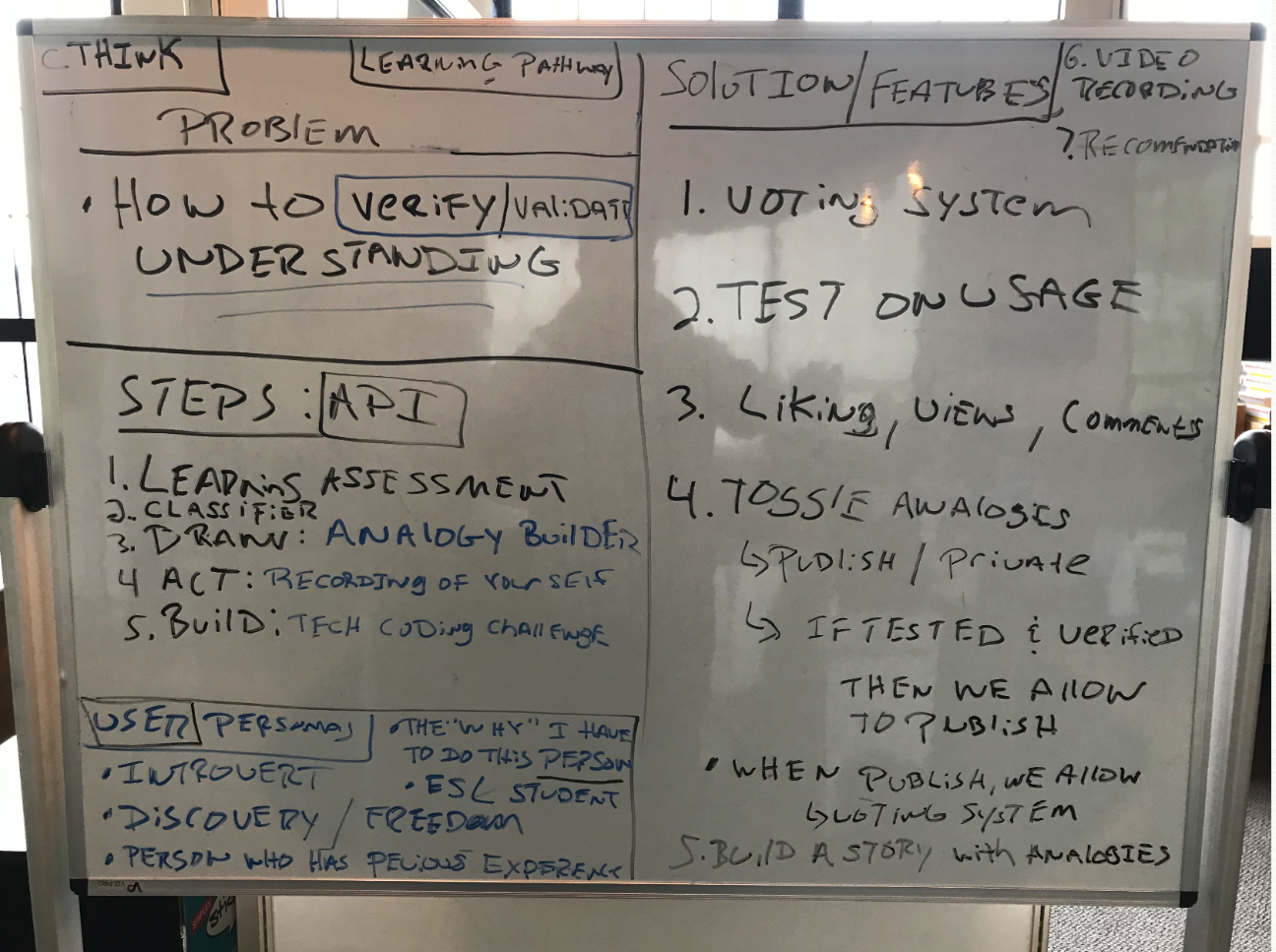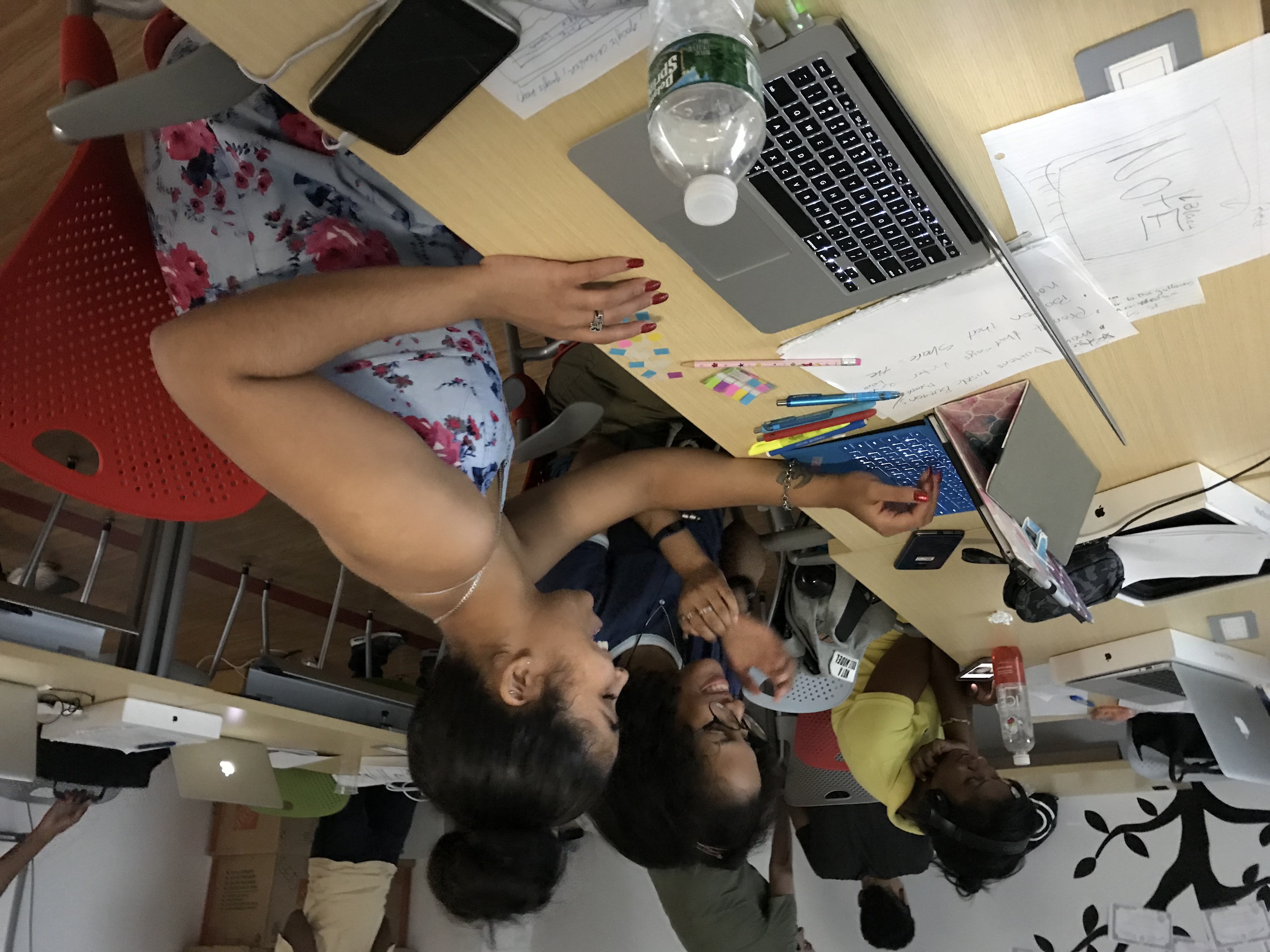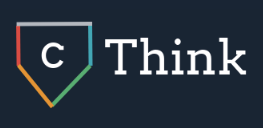
Heriberto
Roman

Tremaine
Davis

Elvis
Garcia

Merrishel
Richardson

Brian
Carela
When educating a diverse population of students, the ability to break down complex concepts becomes quite important. After working closely with students and his son Elijah , Heriberto Roman, a former Technical Instructor, realized a consistent problem that existed with his adult students, elementary student Elijah, and once himself as a code newbie: the problem of being inundated with new, difficult technical concepts and not being able to process and retain them .
Heriberto wanted to build something that could help both people new to coding and everyday learners. .
The result is cThink, a multisensory tool designed to improve retention of technical coding concepts through the Draw ✏️, Act 🎭, Build 🔧 D.A.B pedagogy by helping learners retain them through personalized analogies, building them out, and saving their process.It is centered on the abstraction component of the computational thinking model, which allows users to create a simplified representation of a problem that accommodates visual, auditory, and kinesthetic learning styles.
Say a student is introduced to a programming method, through the cThink platform, they are prompted to draw their interpretation of that method, to act out or communicate an instance of that reference, and then to build the code they were introduced to. Because this process incorporates the three main styles of learning: Visual, Auditory, and Kinesthetic, cThink allows the learning to code process to be a creative and more personal experience, while which optimizing the retention of information into long term memory
The brain stores long-term memories in the hippocampus, which needs context to store information. The context, in this case, is not lines of code. It is the mnemonic and rehearsal that will cause the memory to move from working memory into long-term memory. A change that starts in the brain’s hippocampus.
After working closely with The Knowledge
House’s students and his son Elijah ,
Heriberto Roman an Instructor at The Knowledge House realized an
intresting pattern, a problem that existed
with his code newbies students
and once himself a code newbie.
Problem: being inundated with new difficult technical concepts
and not being able to move them from working memory into long-term memory
.
Heriberto set out to come up with a solution that plagues code newbies across this nation , the proposal to the solution is called cThink
Heriberto introduced the idea of an instructor
centric capstone project to the teacher & learning
team at
The Knowledge House to start building solutions for TKH.
cThink was pitched by Heriberto Roman to the instructor team and accepted as the first instructor capstone project.
cThink team decides to utilize the Scrum agile software development methodology in order to build a proof of concept [MVP] .
Roles are identified within the cThink team and team members join in on the product development sprint and proceeds with its first whiteboarding session.

cThink team makes progress within the product development sprint:

Define product
backlog

Define project
roadmap

Create trello
board

Define and create
user personas

Planning poker session for
user story estimations
West Farms bridge to tech cohort is in full swing and Heriberto uses this class as his sandbox to implement and test drive the in-person pedagogy of DRAW. ACT. BUILD. {D.A.B}.

cThink team makes progress within the product development sprint:

Define product
backlog

Define project
roadmap

Create trello
board

Define and create
user personas

Planning Poker for
user story estimations
cThink kicks off the UX/UI sprint #2 and makes progress within the UX/UI sprint.

Create low
fidelity wireframe

UX/UI sprint
demo day

Sprint velocity
for UX/UI sprint
The Verizon 5G EdTech Challenge is a nationwide open call to find innovative, cutting-edge, education technologies that will transform middle school education.
cThink successfully applies for the grant
cThink team completes the product backlog:

Define product
backlog

Define project
roadmap

Create trello
board

Define and create
user personas

Planning Poker for
user story estimations
cThink team completes the low fidelity wireframe & UX/UI sprint demo day

Create low
fidelity wireframe

UX/UI sprint
demo day

Sprint velocity
for UX/UI sprint
cThink receives word from the Verizon 5G EdTech Challenge and despite the cThink team-best effort, did not win the grant to fund the project.
Project cThink comes to a hault.
Project cThink becomes a solo team, Heriberto Roman founder of Hroman Codes, LLC and main contributor rekindles the project and starts to define the cThink roadmap.

Heriberto redefines a new, fresh, modern look for CThink from the old logo

to the new one.
Next update coming soon!